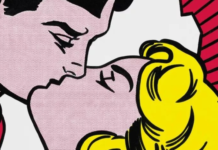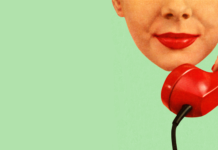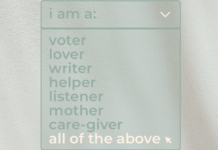Remember that scene in Clueless, where Cher kind of makes fun of Tai for wanting to burn the few things she associates with her late relationship with Elton? Turns out, Tai was right. Burn, baby, burn. That’s the best way to mend your broken heart. Well, not the burning so much as the ritual of it all.
For those in a committed and loving relationship, Valentine’s Day may be something to look forward to, but for the broken-hearted, it’s a painful reminder of lost love. Each image of heart-shaped chocolate boxes, bouquets of red roses and sappy card commercial — even the usual catch-all heart emoji — can make the lonely feel even more lonely.
If you are having a hard time in the wake of a difficult breakup, behavioral science sheds some light on how to move on. In a series of experiments, researchers Michael Norton and Francesca Gino reveal that people who engage in rituals recover more quickly and report feeling better than those who don’t.
We typically think of rituals as communal or religious but, as Norton and Gino’s research shows, a ritual doesn’t need to be to be effective. They were surprised to discover that, when asked to write about a ritual performed in the wake of a loss, most participants turned to “everyday” practices that were self-generated, personal and private.
One wrote:
I returned alone to the location of the breakup each month on the anniversary of the breakup to help cope with my loss and think things over.
Another wrote:
I looked for all the pictures we took together during the time we dated. I then destroyed them into small pieces (even the ones I really liked!), and then burnt them in the park where we first kissed.
Afterward, the participants felt better.
Norton and Gino theorize that engaging in a ritual after a loss restores a sense of control. Feeling in control mitigates sadness and increases well-being, physical health, and resilience.
In addition to helping mend a broken heart, Norton and Gino’s research suggests that performing a ritual—even one made up by others—may be helpful in dealing with everyday setbacks. In one experiment, they induced a sense of loss among participants by having them lose a lottery. Those in the “ritual group” were told about the benefits of rituals and then asked to engage in the following mini ritual:
1) Draw their feelings on a piece of paper for two minutes.
2) Sprinkle a pinch of salt on it.
3) Rip the paper into pieces.
This group described feeling much better and less disappointed than those who didn’t engage in the ritual.
The results of the study indicate that, in order for a ritual to be most effective, it needs to be deliberate, intentional and performed. Just knowing that a ritual is helpful is not enough. Action must be taken though the specific actions do not seem to matter.
Create a go-to ritual to help you deal with the daily hassles and disappointments. While you cannot control all of life’s curve balls, you have far more power than you realize over whether or not they take you down.
I wish you all the best,
Dr. Samantha Boardman






